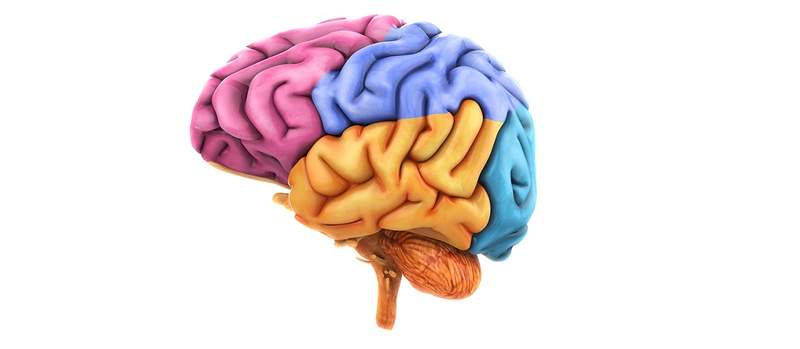Ecopraxia, involuntary imitation of movements

- 2127
- 266
- John Von
Ecopraxia is the involuntary repetition of the movements observed in another person. This imitation of movements is usually related to Ecolalia, which is the involuntary repetition of someone else's language.
It is considered as a tic, however, It is associated with the behavior of people with autism, Tourette Syndrome, Ganser Syndrome, Schizophrenia and others Neurological disorders.
Content
Toggle- What is ecopraxia
- Disorders in which ecopraxia is present
- ECOPRAXIA DIAGNOSIS
- ECOPRAXIA TREATMENT
- Bibliographic references
What is ecopraxia
It is more common for people to know what the Ecolalia, a ICT that some people with autism have and that is based on the Word repetition that they listen to other people or sources as television programs and that are used outside context.
In the case of the Ecopraxia, It's about the repetition of another person's actions. In the background it is quite similar to Ecolalia, it is already an ecophenomenon, that is, imitation actions that are automatic and in which there is no explicit consciousness.
Ecopraxia was first described by Emil Kraepelin, a form of ecophenomenon, which include the repetition of vocalizations (ecolalia), of words (ecopalilalia), of facial expressions (ecomimia), or gestures when the contour of objects is drawn (Ecoplasia), among others.
According to Saxby Pridmore, in his study on the possible mentals of ecopraxia in schizophrenia, “ecopraxia occurs in schizophrenia when the mirror neuron system provides a representation to the lower frontal circumvolution and the motor cortex, and that this potential becomes an executed motion, when The disorder is associated with a decrease in inhibition and an increase in excitation".
Anyway, as examples of ecopraxia you can point out to imitate another person who walks, the movement of the head or an arm.
Notably Ecopraxia is not usually diagnosed before three years, since the difficulty of distinguishing between this involuntary imitation and the behavior that children adopt as part of socialization predominates.
However, ecopraxia is repetitive and involuntary and it is common to interfere with social function, generating difficulties when establishing relationships with others, because, imitate or emulate some actions, whether verbal or physical, are considered important in early development, It can be up to three years, but when such behavior becomes reactions and not a means to learn, then they become considered as ecophenomena.
In addition to Tourette's syndrome, the autistic spectrum, schizophrenia and catatonia, aphasia and others, ecopraxia It has also been observed in subjects that have damage to the frontal lobe, dementia, epilepsy and other disorders.
The actions that are imitated can be simple motor tasks, such as raising an object, as well as can be more accentuated, including hitting someone else.
Thus, the person with ecopraxia can imitate the gestures that someone else does, try to walk as a television character, imitate the facial expression of a friend or the gesture of a teacher and can execute these actions in situations where not It seems to make sense.
Disorders in which ecopraxia is present
Some disorders in which this symptom is present are the following:
- Tourette syndrome: it is considered a complex ICT;
- Autistic spectrum;
- Fatigue states;
- Ganser syndrome;
- Neurological disorders;
- Epilepsy, among others.
In addition, It can be present in some specific syndromes of culture, Because it does not enter into the western categories to diagnose, but are due to cultural, mythological and religious influences, such as Latah, Imu and Amurakh.
 The cerebral cortex: morphology, histology and functional location
The cerebral cortex: morphology, histology and functional location ECOPRAXIA DIAGNOSIS
It must be diagnosed by a specialist who will observe the behavior of the person. There are no unique evidence or form to establish this diagnosis.
When children are over five years old it is more reliable to make a diagnosis, because the little ones tend to imitate the behaviors of others and this, as mentioned, is considered normal because it is part of the imitative learning, which is done aware to learn and then perform the action for yourself.
Shortly after birth, babies begin to imitate movements, but this behavior decreases at approximately three years. Other behaviors that are imitative and involuntary, such as yawn, are also considered normal. Therefore, ecopraxia can be diagnosed more easily when the subjects have an age greater than five years. In addition, in the case of adults, they report to experience an impulse that they fail to control.
ECOPRAXIA TREATMENT
Many doctors could try to determine what is the cause of ecopraxia to establish a treatment, but this is not always clear.
In any case, Medication and psychotherapy are used to treat this symptom, Well, it is clear that ecopraxia is not a disorder itself, but a symptom that can be present in several disorders.
If behavior does not cause interruptions in education, nor interferes in other areas of your life, it can remain without being treated.
Heller syndrome
Bibliographic references
- Carmona Fernández, C., & Artigas Pallarés, J. (2016). Tourette disorder throughout history. Magazine of the Spanish Association of Neuropsychiatry, 36(130), 347-362.
- Crespo, m. L., & Pérez, V. (2005). Catatony: a neuropsychiatric syndrome. Colombian Psychiatry Magazine, 3. 4(2), 251-266.
- Pridmore, s., Brüne, m., Ahmadi, j., & Dale, J. (2008). Echopraxia in Schizophrenia: Possible Mechanisms. The Australian and New Zealand Journal of Psychiatry, 42 (7), 565-571. https: // doi.org/10.1080/00048670802119747

